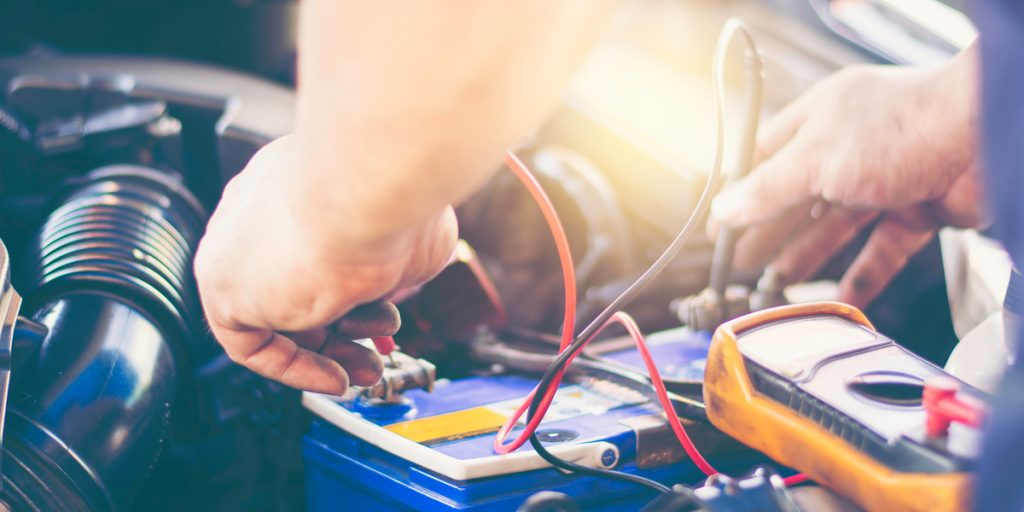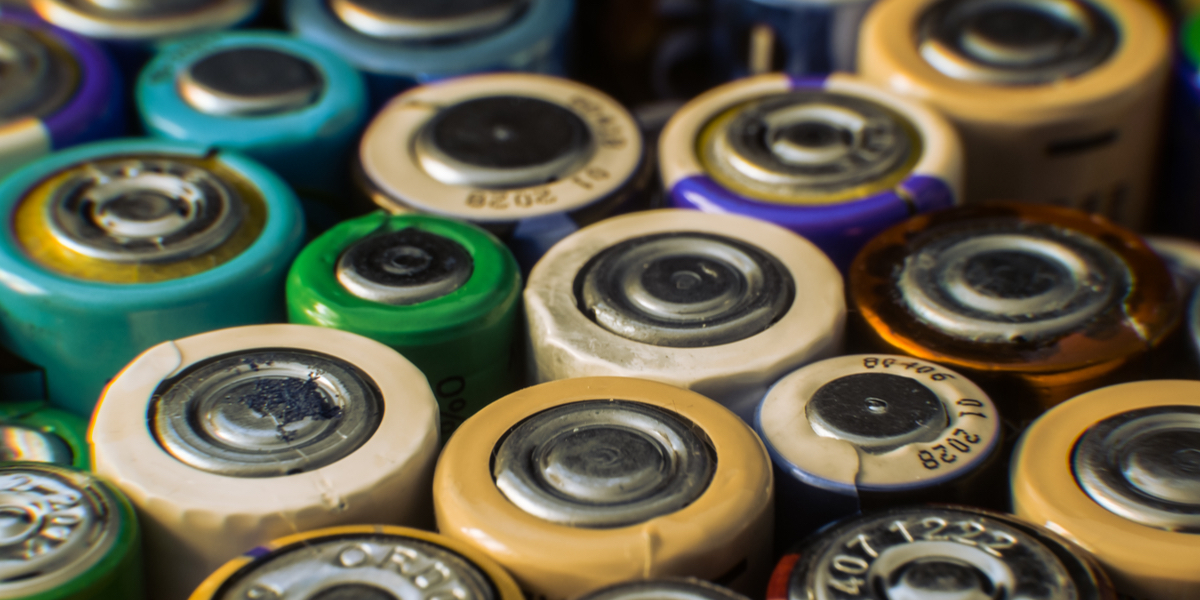EMF could mean one of two things depending on the context in which it is used. When discussing all-things radiation, EMF stands for electromagnetic field. But, when you come across the term in the context of batteries and cells, it stands for electromotive force.
It’s impossible to imagine a life without batteries. After all, these simple devices are what power up your cellphone, laptop, tablet, pocket calculator, flashlight, virtually every mobile device in existence.
But here’s the alert! our cell phone radiates a lot, we suggest checking cell phone radiation chart for that. Even our small tablet radiation is substantial though we don’t care about these in our daily life.
On its own, a battery looks like the dullest thing you’ll ever come across. But the moment you hook it up to something like your smartphone, that little unit turns into your portable power plant and brings your device to life. Without further ado, let’s dive into defining the EMF of a battery in simple words.
Battery Size Matters

What happens when the battery in your remote control or flashlight dies? You hit the stores to buy a new one right? When you’re doing this, you usually ensure that you buy one that’s the same size as the old ones so that they can fit inside the case.
Think of batteries as boxes. Just like a bigger box packs in more stuff, likewise, a bigger battery stores more electrical energy than a smaller one. This is because they harbor more chemical electrolytes and larger electrodes that allow them to release more energy. Here’s a short chemistry lesson for you.
Electrolytes are liquids that contain ions. An ion is a molecule or an atom that carries an electric charge due to the loss or gain of one or more electrons.
Ions carry a net positive charge or a net negative charge depending on whether they gained or lost electrons. An electrode is a conductor that is immersed in an electrolyte. It allows an electric current to flow through.
So, it makes perfect sense then that big batteries have a larger capacity to store more electrolytes, which in turn, equates to more ions (or charge carriers). Given these increased number of ions, it means that these batteries have the potential to generate more electric energy.
Sizes of the battery determine the capacity and large positive terminal and negative terminal provides comparatively large area for chemical reaction and can generate more potential difference.
Battery Power
The one thing you’ll notice in batteries labeled AAA, AA, C, or D is that they all have the same “1.5V” indication despite them being all different sizes. The reason for this will be discussed in detail in the internal resistance section later in this article.
If you want to know what amount of electrical energy a battery holds, you need to look at the mAh measurement. This stands for milliampere-hours and is a measure of the charge a battery has.
So, if you want a smartphone that can stay on for long periods before you need to recharge it again, you need to get a battery that has a high mAh measurement. This is usually indicated on the battery itself. In larger sized batteries, the unit of measurement used to indicate how much electrical energy they hold is “Watt-hours.”
Defining the EMF of a Battery

If you ever forget to turn off your car headlights, and they stayed on all night, you’ll find them dim by the time morning rolls around. They don’t blink off suddenly. Instead, their intensity gradually fades as the battery gets depleted. The battery is the voltage source for the headlights.
Put simply, you can think of voltage as the “push” given to charges (ions) to move them through an electrical conductor. Voltage sources include lead-acid and nickel-hydride batteries, solar farms, wind farms, and dams.
Voltage sources have the potential to supply current if they are connected to a resistance. This is referred to as the “potential difference,” and it creates an electric field that exerts a force on charges pushing them through the conductor. This flow of charges is what is referred to as an electric current.
Electromotive force, abbreviation E (EMF), on the other hand, is a special kind of potential difference. It measures the force exerted on charges when no current is flowing. In short, the key difference between the potential difference and the EMF has to do with whether or not current is flowing through the circuit. If the current is flowing, then you know you’re dealing with the potential difference whereas if it is not, then you know straight away that you have a case of EMF on your hands.
The Water Analogy
A great way to understand the concept of potential difference and EMF is to think of water flowing down a tubular water slide. The water, in this case, represents charges, and the water slide represents the circuit. When the water is at the very top of the slide, it contains a certain amount of potential energy before it starts flowing downwards. This energy gradually decreases,the closer the water gets to the bottom.
Think of potential energy this way. If you threw a 2-pound rock off the topmost floor of a 20-story building onto a car parked on the side of the block below, it would likely cause more damage than if you threw it off the second floor of the same building. This is due to the difference in the potential energy which is much higher when the rock is on the twentieth floor than when it is on the second floor.
Getting back to the analogy, once the water reaches the bottom of the slide, the potential energy it possesses is at a bare minimum. So, a lot more work must be done to send it back up again to reach its maximum potential energy before it can travel down the slide once again.
That’s exactly how an electric circuit works only on this case, the energy required to bring the charges to a higher potential difference is referred to as the EMF. The units for measuring EMF are volts (V).
The Relationship Between EMF and the Voltage Source
Any voltage source such as a battery has an EMF directly associated with it. But, as you’ve seen in the water analogy above, the output voltage of a device will be different from the EMF once the current starts flowing through the circuit.
If you then measured the voltage across the terminals of the battery, you would find that as it continues to supply current, its voltage declines as the battery gets depleted. But, if you measured the device’s output voltage without having to draw current, then the value you get would equal its EMF even in cases where the battery is almost completely depleted.
Internal Resistance of a Voltage Source
Consider the internal resistance of a battery. Internal resistance, in this case, refers to a battery’s own innate ability to hinder the flow of charges through a conductor circuit.It usually comes from insulators like plastics, carbon, or any other material that is not a conductor through which electric current can flow.
Think of a battery’s composition as two wells that are connected through a narrow tube in between them. Each well contains charges, with one of them having a larger volume of them than its counterpart. As you would expect, the well that has a higher volume of charges would push the excess ones through the tube into the neighboring well. This process would continue until both wells contain an equal volume of charges.
In an ideal scenario, you would expect the total migration of all the excess charges from one well to the other. However, the reality is far from this. Some charges will inevitably get lost during the handover process. It is, therefore, not possible to achieve fidelity in both wells.
In batteries, these lost charges are given off as thermal (heat) energy. It explains why batteries often get hot after a while of using them. The hotter it gets, the more difficult it becomes for current to flow through the battery. This is what brings about the battery’s internal resistance, and its intrinsic presence suggests that no voltage source is perfect.
The Laws of Thermodynamics
There isn’t any battery in existence that is fully efficient in its transfer of power to an external circuit. Some of it will inevitably be dissipated. This concept is reminiscent of the laws of thermodynamics, which emphasize that no mechanical machine can utilize and convert an input into an output without the expenditure of a marginal amount of energy on itself.
This is usually given off as heat. The laws of thermodynamics are one of the most fundamental rules of the universe, whether applied to a roaring Lamborghini or the lithium-ion battery in your smartphone.
The Relationship Between EMF and the Internal Resistance
As mentioned earlier on, you’ll notice that batteries labeled AAA, AA, C, or D all have the same “1.5V” label on each of them despite their different sizes. Average alkaline batteries usually have a zinc or ammonium chloride electrolyte, while the electrodes are made up of a zinc anode and a manganese dioxide cathode. An anode and cathode refer to a positively- and negatively-charged electrode respectively.
Larger-sized C and D batteries contain more charge and energy. They can, therefore, supply a larger current than their smaller AAA and AA counterparts. But, since all of them have the same chemical composition, it makes sense that they would all have identical EMF. The internal resistance of a battery ultimately depends on its size. Larger batteries have a lower internal resistance than smaller batteries whose internal resistance is much higher in comparison.
Any voltage source has an EMF which directly correlates to its potential difference and its internal resistance. The lower the internal resistance is for a particular EMF, the higher the amount of current and power a given voltage source can supply. The output of a battery across its terminals equals the EMF when there’s no current flowing.
It’s important to note, however, that the internal resistance of a battery doesn’t remain constant. It tends to increase as the battery gets depleted. It also increases as the temperature of the battery rises. The magnitude and direction of the current flowing through the circuit are also a major determinant of a battery’s level of internal resistance. For rechargeable ones, the magnitude of the internal resistance of their cells depends on the number of times, as well as how deeply the battery has been depleted.
How Batteries Work

The various combinations of the chemicals that make up the electrolyte in a battery, along with the composition of its terminals, determine what its EMF will be. Most batteries operate in the same basic way but, for this illustration, a car battery will be used to demonstrate.
How Electrical Energy Gets Converted in a Lead Acid Battery
Invented in 1859 by French physicist Gaston Plante, lead-acid batteries are the de facto voltage source of choice for most cars. It also has vast applications in uninterruptible supply (UPS) solutions, submarines, boats, and pretty much any other application you can think of that requires a low-cost rechargeable energy source.
A typical 12V lead-acid car battery is made up of six lead-acid galvanic cells. Each is connected to the other in series and housed inside a battery case. Within each cell are two types of electrodes – the positive cathode made of lead dioxide and the negative anode made of lead. Since pure lead is quite soft, it is reinforced with additives like antimony or calcium to boost its mechanical strength as well as its electrical properties.
The “acid” part of the lead-acid battery makes up the electrolyte, which is a diluted solution of sulfuric acid. The concentration of this solution varies depending on the battery design. However, it is typically less not more than 40% of the total weight of the solution. The solution comprises positively charged hydrogen ions and negatively charged sulfate ions.
Lead acid battery interact once there’s a good voltage output in a closed circuit. Chemical reactions involve substances which are not reusable. As the chemicals start getting diluted, low terminal voltage reduces the EMF.
In a lead acid battery, apart from positive terminal, negative terminal, load resistor and external resistor there’re a number of factors which drives electromotive force voltage. Voltage output gets reduced if either terminals gets eroded or chemicals gets diluted.
Some battery designs incorporate gelling agents like silica dust to turn the electrolyte solution into a thick gel. Perhaps one of the strong suits of gel lead-acid batteries is their low-maintenance nature and the fact that they can be mounted in any direction without interfering with the power output. These are called dry cell.
Voltage output equals EMF? No. Voltage output is always lesser than the EMF of a cell. Internal resistance eats out a part.
Lead-calcium, lead-antimony, valve-regulated lead-acid, flooded lead-acid, deep-cycle lead-acid, and many others are all batteries that you may have come across that constitute the lead-acid family of batteries.
With time battery output voltage decreases. In every battery positive or cathode terminal gets eroded with use. Electromotive force EMF operates to drive electricity while maintaining constant terminal voltage. If terminal voltage decreases, ampere/second decreases also.
In rechargeable batteries or nickel metal hydride batteries, basic operation is almost similar. While connected to the power source, it starts reversing the chemical reaction (in the opposite direction) that happens in a real battery. As the chemicals are being restored to their original states , battery’s energy gets restored. So there’re no depleted batteries at all. These don’t use lead oxide plates.
Small electrical appliances and electronic devices can be run using these batteries. This battery consists of lithium ion instead of lead oxide plate. Rechargeable nickel cadmium cells also changed the scenario with higher EMF. Rechargeable battery increases efficiency as need of replacement gets down. Using a battery charger anyone can recharge it.
Solar cells also do the same. Instead of the electricity from our home, solar cells use solar energy to get the job done. It’s a bit different from conventional current flow. Solar system features low internal resistance. Increased internal resistance means voltage drop and low electric potential and ultimately low electromotive force. At the end point, it also works in two terminal device. It starts positive current flow once load connected.
Relationship between the Chemical Reactions in a Battery and Its EMF
The chemical reactions in a battery cannot take place unless there’s a complete circuit to facilitate the supply of electrons to the cathode. In most cases, the anode will supply these electrons which flow through resistance before they end up in the cathode. Since the chemical reactions that take place in the battery involve elements and compounds that have some level of resistance, EMF cannot be created without internal resistance.
Do Batteries Emit Electromagnetic Radiation
This is where the other definition of EMF comes into play – Electromagnetic field (EMF) radiation. Now that you understand how batteries work to produce energy, the question becomes, do batteries emit radiation? The short answer to this would be – no, they don’t.
As you’ve seen, batteries rely on chemical reactions to generate an electric current, which in turn powers an electronic device. This type of chemical reaction does not produce any electromagnetic fields around the battery. While they may not be a direct source of radiation themselves, they can certainly be the cause of it.
For example, if you have a pair of AA alkaline batteries sitting on your coffee table in the living room, you don’t have to worry about them emitting harmful electromagnetic rays. If, however, you put them into your cordless phone, which relies on wireless signals to transmit voice data, then you’re at risk of radiation exposure from your handset, but not from the batteries themselves.
If you have a cellphone, smartphone, tablet, or laptop, then you know that they all rely on lithium-ion batteries to function. If you take out the lithium-ion battery out of the device and place it separately on a table, you’re not at any risk of radiation exposure.
If it’s in your device enabling it to connect to a cellular, WiFi, Bluetooth, or any other wireless network, then you’ll certainly be getting some level of radiation exposure from the device but not from the battery itself.
Parting Shot
In this digital era, mobility is synonymous with convenience, and you can’t very well be mobile if you don’t have a mobile power source. Batteries exist for just this purpose. Although people often take for granted how these little units work, one thing is for certain. The EMF of a battery takes center stage when it comes to its role as a voltage source.
Read next: Radiation From Flying on Airplanes – Exposure Risks and Protection Tips


